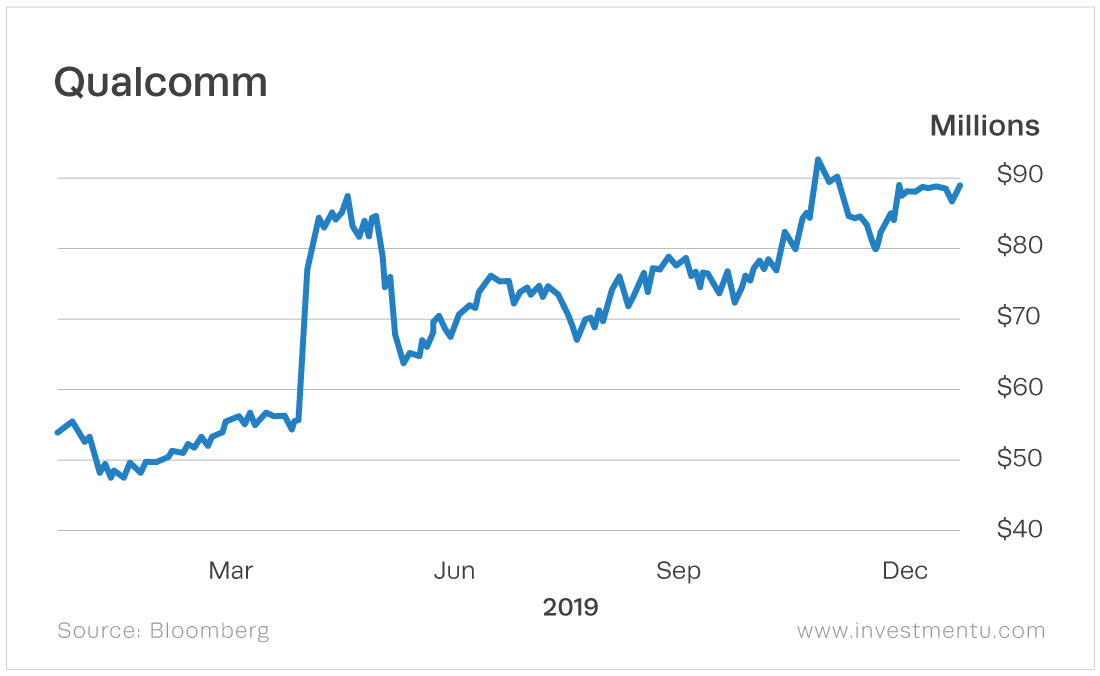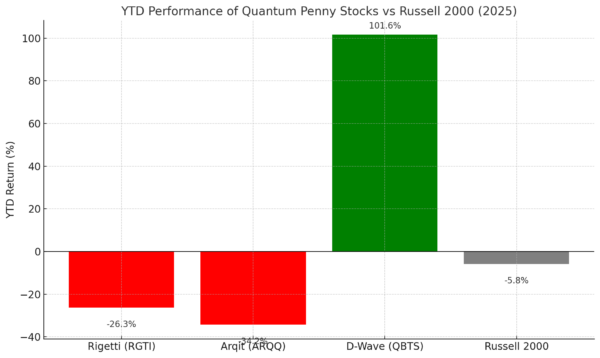5 Virtual Reality Stocks to Watch in 2020
Maybe you think virtual reality (VR) is just for kids’ games and not worth your time. You’d be very wrong. And you should start looking into ways to invest in virtual reality stocks before they really take off.
What is virtual reality? VR is a digitally simulated environment that a user experiences being in using virtual reality technology, such as a headset. When immersed in a VR environment, users can move around and explore this digitally simulated environment and interact with it.
Technically, there are three varieties: nonimmersive, semi-immersive and fully immersive, but only the former two are currently available. Most often, the reality is experienced as a user wears a head-mounted display. Sometimes, though, a special room is set up where the environment is literally displayed on the walls.
In 2018, the global virtual reality market was valued at $7.3 billion. But this has been projected to grow at a compound annual growth rate of 42.2% through 2026. At that time it is projected to be worth $120 billion.
While virtual reality is important to the gaming and entertainment industry, it has a wide range of applications. These include innovations in the automotive, manufacturing, defense, education and healthcare industries.
The 5 Virtual Reality Stocks to Watch Now
Now that you have a basic understanding of what the VR industry is, let’s dive into some of the top virtual reality stocks to watch in 2020.
-
- Facebook: It can be argued that Facebook (Nasdaq: FB ) is currently the gold standard in upcoming virtual reality tech companies. This standard was set back in 2014 when Facebook purchased Oculus for a cool $2 billion.
Right now, virtual reality is only a small part of what is a giant social media business. But do not underestimate the power of Oculus in the VR world. Oculus represents one of the two major high-end virtual reality devices. The other is HTC Corporation’s Vive.
And in 2018, Facebook launched Oculus Go. Oculus Go is a much lower-end device. It’s perfect for playing 360-degree video games and costs an affordable $200. And if for some reason the VR biz doesn’t pan out, well, you’d still own shares of Facebook. Not a bad bet at all.
. - Qualcomm: If you’re looking to cash in on the intersection between mobile phone technology and VR, Qualcomm (Nasdaq: QCOM) may be your virtual reality stock. Qualcomm’s Snapdragon platforms combine VR, augmented reality and artificial intelligence (AI) technologies to provide users with immersive, extended-reality experiences.
Snapdragon powers mobile devices with a wide variety of applications. Some of these include gaming and entertainment, as well as industrial applications and education. The Snapdragon XR platform uses stunning 8K 360-degree video playback capabilities and has a frame rate of up to 60 frames per second. This allows for extraordinary visuals that pair with 3D audio to further heighten the user experience.
.
In addition, the San Diego-based semiconductor and telecommunications equipment firm manufactures and markets digital wireless communications equipment and services. The stock is currently trading around $88 per share. It has climbed about 40 points over the past year, beating the S&P 500 by about 30% over that period.
. - Sony: Sony (NYSE: SNE) is the worldwide leader in virtual reality headsets. But Sony’s challenge has been staying ahead of its competitors. HTC’s Vive Pro has delivered better performance graphics for its high-end customers. And the Oculus Quest also seems to have great appeal for the “virtual reality masses.”
.
One advantage Sony does have is the goodwill it’s built up through its legendary gaming platform the Playstation. As a result, it has a definite “in” with the VR gaming crowd. Not only that, Sony can take advantage of the popular licenses it holds for games like Tetris Effect and Resident Evil to deliver hot properties on the Playstation VR. The VR connects right to your Playstation 4 console for even more ease of use.
.
Since March 2019, Sony’s stock has climbed steadily about 30 points to around $70 today. And although third quarter revenue was down a bit, the company still pulled in a healthy $187 billion in profits for a net profit margin of nearly 9% and a diluted earnings per share of $148.59.
. - Microsoft: The Microsoft (Nasdaq: MSFT) HoloLens 2 headset offers immersive mixed reality experiences for commercial use. The technology is enhanced by Microsoft’s cloud computing services and its AI resources as well. The experience is completely untethered. No pesky wires to trip over: The headset is a self-contained computer with Wi-Fi connectivity.
.
As prices begin at a substantial $3,000, this product is clearly not intended for retail users. It’s important to note that many analysts believe commercial applications of VR technology are going to outpace retail and entertainment use. As a result, Microsoft may be a great long-term virtual reality stock to consider.
.
Microsoft has had a good year. Its stock climbed from a low of $101.26 to $160.80 and the trend looks to continue. Revenue in the third quarter was up 13%, and net income rose 21% year over year. And many expect the company to boost its dividend significantly in 2020.
. - Nvidia: Virtual reality requires powerful graphics processing units (GPUs) and on that front Nvidia (Nasdaq: NVDA) delivers. It is currently building the fastest GPUs for virtual reality that are available on the market. Nvidia, a company also known for other innovative technologies such as its applications for the Internet of Things (IoT), has created a division called VRWorks.
.
VRWorks is dedicated to providing a comprehensive suite of tools for virtual reality developers including application programming interfaces, libraries and engines. After its stock tanked in 2018, Nvidia is starting to find its footing again. Over the past year, the stock price has climbed from a low of $130 to its present value of around $240. This is a quite significant gain. Though its last earnings report was weak, Wall Street is bullish on the stock’s future.
- Facebook: It can be argued that Facebook (Nasdaq: FB ) is currently the gold standard in upcoming virtual reality tech companies. This standard was set back in 2014 when Facebook purchased Oculus for a cool $2 billion.
Virtual reality is not just a toy. It has the potential to be big business. By keeping a close eye on the virtual reality stocks above, you will be well-positioned to take advantage of the profitability of this technology over the next few years.
We regularly cover tech stocks here at Investment U. If you’re interested in staying on top of this innovative and thriving sector, make sure to subscribe to the Investment U daily e-letter below. It’s completely free and full of insights you won’t want to miss.
About Brian M. Reiser
Brian M. Reiser has a Bachelor of Science degree in Management with a concentration in finance from the School of Management at Binghamton University.
He also holds a B.A. in philosophy from Columbia University and an M.A. in philosophy from the University of South Florida.
His primary interests at Investment U include personal finance, debt, tech stocks and more.






